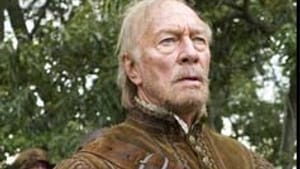Stay in the Loop
BSR publishes on a weekly schedule, with an email newsletter every Wednesday and Thursday morning. There’s no paywall, and subscribing is always free.
The New World: Poisoning Paradise

The return of Terrence Malick
ROBERT ZALLER
Terrence Malick is this generation’s Orson Welles, a director as famous for the films he never made as for the ones he did. Malick’s first features, Badlands (1973) and Days of Heaven (1978), were the best double debut since Welles’s Citizen Kane (1941) and The Magnificent Ambersons (1942). They remain films that redefined the possibilities of mainstream American cinema as decisively as Welles’s masterpieces had. And then . . . silence. Malick stayed around the edges of the film world, planning projects that, like many of Welles’s, never quite got off the ground, mentoring other filmmakers, and even taking the odd job of script-doctoring. All of this fed the legend of a poet too delicate for verse, or, more crassly, a filmmaker too good for the industry.
Malick resurfaced at last in 1998 with his World War II epic, The Thin Red Line. Visually sumptuous, it faltered as drama and failed as allegory. The same may be said of his new effort, The New World. As with anything by Malick, you’ll be riveted by his camera work, and critics and historians will no doubt be dissecting the film’s narrative technique for decades to come. Figuring what it’s all about, however, will be another matter. It isn’t a question of plot. The saga the film recounts, that of John Smith and Pocahontas, is America’s oldest love story, or, more properly, its foundational myth. Malick takes the popular legend as given, and spins his own version from that. What he is after, however, as in his previous films, is not so much character as community--or, rather, the ways in which the absence or deformity of the latter subverts the former.
For Malick, America-- the real subject of all his films--is an empire that never succeeded as a community. In Badlands, the bleak, majestic natural backdrop that frames the killing spree of his young lovers, Kit and Holly, is both a reflection and a commentary on the anomie of the culture they emerge from. Days of Heaven contrasts the richness of the land with the greed that despoils it and the class division that sets the stage for its tragedy. In The Thin Red Line, empire is community--the artificial community of a marine platoon sacrificing itself to secure a few acres of Pacific coral.
From this perspective, The New World was a natural project for Malick, a return to the aboriginal scene of the crime--the first permanent English settlement at Jamestown, Virginia. The credits roll over an underwater shot (as in The Thin Red Line, water serves as a metaphor for idyllic sanctuary and uncorrupted purity). An establishing shot recreates the primeval coastline, and, suddenly, the English vessels appear. These first images are startlingly beautiful, and remind one of Malick’s unmatched gift for framing a scene. The colonists disembark, clumsy in their armor, as the all-but-naked Algonquin Indians watch them from concealment. Thus is the battle joined.
The colonists’ leader, Captain Christopher Newport (an excellent but all-too-briefly seen Christopher Plummer), warns them that they must not offend the “naturals,” on whom their survival may depend. They erect a stockade, however, which is as much a prison as a fortification, as Malick drives the point home: The Old World “unnaturals,” immured in their fear, superstition and drive for possession, embed themselves in the pristine soil like a virus programmed to expand and destroy. Only John Smith (Colin Farrell) seems to respond to the beauty about him, and it is he who, after capture, serves as a go-between with the Indians.
The Indians’ village, in contrast to Jamestown, is simple, uncluttered, and undefended except by the forest itself. Smith responds openly to these noble savages, who in turn permit him to court Chief Powhatan’s nubile daughter (Q’orianka Kilcher). Pochantas picks up English with remarkable speed (Smith does not seem to require Algonquin), and the two spend long idyls staring meaningfully into each other’s eyes. This, Malick seems to suggest, is how it should have been: the Adam of the Old World and the Eve of the New, renewing the original covenant on the shores of Eden.
It is soon time, however, to return to the fallen world we actually inhabit. Smith brings Pocahantas back to Jamestown, where he is the temporary beneficiary of a rebellion against Newport’s lieutenant, who has been left in charge of the settlement. Smith finds the colonists on the verge of starvation, but Indian supplies rescue them. This brings little gratitude, for the two sides are soon bloodily at war, and Smith, overthrown in turn, is subjected to brutal torture and then hard labor. Pocahantas, now caught between two worlds, loses caste and even identity. Smith’s fortunes revive with the return of Newport, but then Smith is sent off in search of the elusive Northwest Passage. Since Pocahantas cannot accompany him, retain her status as his consort in his absence, or return to her people, Smith instructs that she be told he has perished at sea. This best ensures her safety--she can simply be ignored as an outcast--but, of course, it also breaks her heart. The absent lover who feigns death is a familiar Shakespearean touch (Romeo and Juliet, Measure for Measure), and Smith, actually shipwrecked, is thrown upon a northern strand where Malick poses him thoughtfully, like Hamlet cast up on Denmark. Alas, Colin Farrell looks more like Marlon Brando brooding over his lost Tarita in Mutiny on the Bounty. In any case, he makes no apparent attempt to return to Pocahantas, or to communicate with her. In the code of lovers, this is original sin; in terms of Malick’s fable, it is, even more than the colonists’ imperial mandate, the primordial act of betrayal against Eden.
Matters are further confused when the kindly widower John Rolfe (Christian Bale, doing his best to look like Tom Cruise) woos and lawfully weds Pochantas (now christened Rebecca). The princess’s fame spreads, and King James I has her brought to England, whose polled and sculpted gardens--not fashionable, in fact, until the 18th century--contrast with the wild beauty of Virginia. There, Smith reappears, pounding upscreen on a charger. The gentlemanly Rolfe permits a final exchange between the erstwhile lovers, and Pochantas realizes that her heart now belongs to her husband. Before she can live happily ever after, however, she is seized with a fever and dies. The Old World will not have her after all.
It’s a little difficult to say just where all this falls into melodrama, but it may simply have been implicit in foregrounding the love story to begin with. Malick has used young and adolescent females as the focus of his films before (Sissy Spacek in Badlands, Linda Manz in Days of Heaven), but always with ironic distance. That distance disappears in his Pocahantas. Q’orianka Pilcher, cast after a search that, we are told, led Malick’s scouts to 13 countries, gives a lissome and natural-seeming performance, but Malick is hardly unselfconscious in following her: One is reminded not only of Brando, but of the still more embarrassing voyeurism of Bertolucci’s Stealing Beauty. In the end, we are left, not with a myth of origin, but something closer to the clichés of a Romance novel.
I offer this judgment with regret, for the Malick of Badlands and Days of Heaven was an artist of rare vision and accomplishment, and he retains an honored place in the history of American cinema on the basis of those films alone. Like Francis Ford Coppola and Martin Scorsese, he blazed briefly and somehow lost, not his talent, but his touch. The New World is not, by ordinary Hollywood standards, a bad film, and there are moments of beauty in it that would make other films memorable. But Malick must be held to a higher standard. I will continue to hope that he can regain it. It does him no favor, however, to deny that his second incarnation as a filmmaker has so far fallen sadly short of his first one.
To view a response, click here.
Sign up for our newsletter
All of the week's new articles, all in one place. Sign up for the free weekly BSR newsletters, and don't miss a conversation.

 Robert Zaller
Robert Zaller